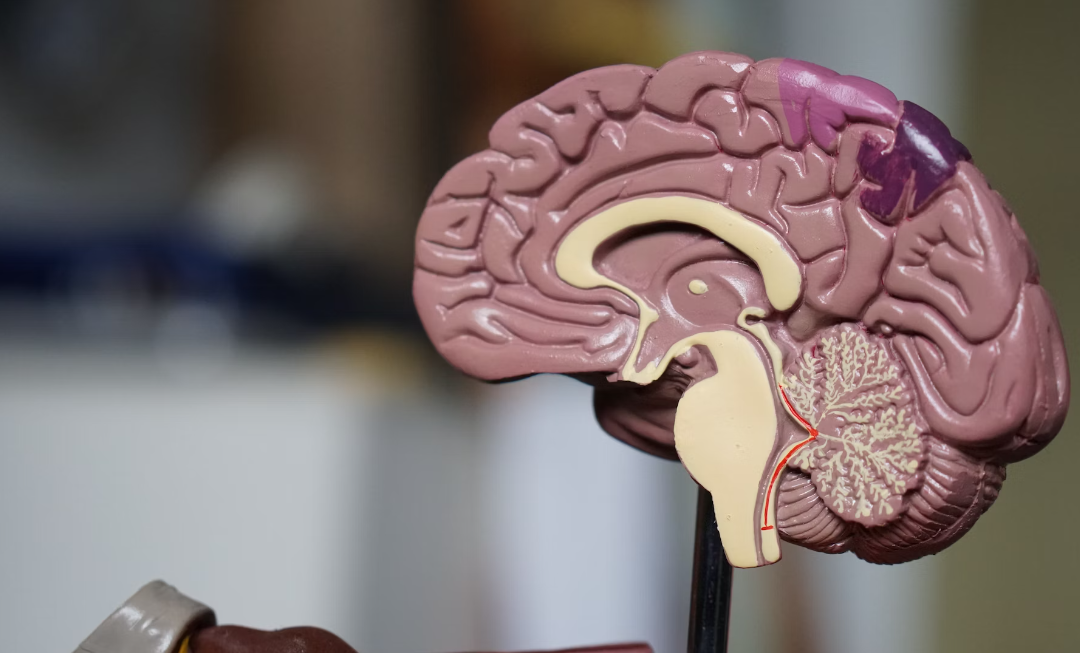The Big Idea: The phenomenon of Cognitive Bias has been studied for more than 50 years. Despite decades of research, most leaders are not aware of how these errors in thinking influence their decisions every single day. The best leaders will learn about (and ways to correct) this ubiquitous tendency for improved—and more ethical—decision-making.
I want to thank my colleague Dr. Melinda Diciro for being a champion for this incredibly important topic.
The notion of cognitive bias was first introduced in the 1970s by psychologists Amos Tversky and Daniel Kahneman.
In 2002, Kahneman won the Nobel Prize in Economic Sciences for much of the work he had done in collaboration with Tversky. Sadly, Tversky died before 2002 and therefore could not be awarded the Nobel Prize (it is not awarded posthumously).
In 1983 Tversky and Kahneman published a famous study now referred to as “The Linda Problem” in which participants were given limited information and had to decide if Linda was a feminist or not. You can read more about the study here if you are interested.
The research on cognitive bias has uncovered very common human errors in decision making, inaccurate judgments, illogical interpretations, and irrational thinking.
The field points out that humans “create their own subjective reality” based on the information they have available.
Steven Covey shares a powerful story in the 7 Habits of Highly Effective People that illustrates how we create our subjective reality:
Early one morning in New York, Covey boarded the subway. Everything was quiet and peaceful.
At the next stop, a man boarded the subway train with his three children. The children were loud and obnoxious, disrupting the early morning serenity, even grabbing newspapers from other passengers.
Everyone seemed to be irritated, but no one said anything, and the father appeared to be staring blankly as if oblivious to his children’s unruly behavior.
Finally, Covey leaned over and politely asked the man if he could intervene and manage his kids.
The man looked up slowly and replied, “Oh, I guess I should do something about it. We just came from the hospital where their mother died an hour ago. I don’t know what to do or think, and I guess they don’t either.”
Covey’s entire perception of the situation changed completely with one new piece of information. He went from irritation to compassion in an instant.
How much of our lives do we live this way?
We construct a narrative that fits our perspective of a situation, and easily miss other possible explanations.
I catch myself doing this almost every day.
Why are thinking errors so common?
Research on cognitive bias uncovers common critical errors in our daily thinking and perception.
We like to think that we are rational and logical organisms, but countless studies have shown that we are not nearly as logical as we think we are.
When you consider how our brain works and how emotions, other people, and habits, affect our choices every day—we are simply making far less conscious choices than we would like to believe.
Since leaders often influence large groups of people, it is their responsibility and ethical obligation to spend time learning about cognitive bias, and how to correct it.
The brain is always looking for mental shortcuts to save time and energy.
In distant human past, faster decisions meant increased chances of survival. When our ancestors saw a woolly mammoth or a saber-tooth tiger, they didn’t have time to sit and contemplate it. To a large extent, our brains still operate this way.
But there are things you can do about.
To understand why we make these errors in thinking, it is important to understand the concept of heuristics—mental shortcuts we take to simplify problems and avoid cognitive overload (having to think too hard about things).
In what ways does bias affect our thinking?
Bias has been shown to influence our thinking in the following ways:
- The way we categorize individuals into groups (i.e. racial bias)
- How we evaluate choices and make decisions (weighing desirability of options)
- Judging the probability of outcomes (likelihood of what will happen in the future)
- Memory (our current situation colors how we remember the past)
- Motivation (the drive to maintain a positive self-image)
Each of these domains has a direct impact on leadership behaviors.
List of common thinking errors and biases
Here is a list of common and well-studied cognitive errors or bias, along with some steps you can take to reduce your bias in each area:
- The Fundamental Attribution Error: This is when we are more likely to blame someone else’s problem behavior on permanent personality traits, but blame our own problematic behavior on transitory situational stressors.
- What you can do: Stop and think of three possible situational stressors a person might have when you catch yourself blaming their behavior on “just how they are.”
- Implicit Bias: A negative attitude, of which one is not consciously aware, against a specific social group.
- What you can do: Get to know people outside your normal social group. When we get to know people as individuals instead of classifying them into general groups that they are like, we are more likely to see them as fellow human beings and not part of a group that is “nothing like me” and therefore entirely bad.
- Priming bias: The tendency to be influenced by the first information you receive.
- What you can do: Recognize that you may be influenced by the first information you receive and ensure you gather more information. Change the order or start by gathering information first that you think you might not agree with.
- Confirmation bias: People have a strong tendency to look only for information that confirms what they already believe. Like if you only search for news or social media feeds or friends that believe the exact same things that you believe. It can artificially make you feel more right about your perspective, but the problem is that you’ve limited yourself to interacting only with sources that share your same perspective.
- What you can do: Find people and articles or sources that have differing or opposing views from yours. Make a habit of this. This will help you develop a much stronger and more objective and educated opinion on subjects because you are aware of multiple perspectives on a particular issue.
- Affinity bias: We tend to like people and treat them more favorably if they are similar to us.
- What you can do: You can help reduce your bias in this area by getting to know and appreciate people who are different from you.
- Self-serving bias: We tend to claim more responsibility for success than for our mistakes.
- What you can do: Practice “extreme ownership” of your failures and give more credit away whenever you have the chance to shine the spotlight on others.
- Narrow framing: This has to do with our tendency to simplify a situation or initially see a very limited number of choices we think we have.
- What you can do: Especially in situations where you are only considering two potential choices (binary thinking), make sure to come up with a third or fourth option.
- “What you see is all there is”: Kahneman’s research highlighted that we often tend to think that what we see is all there is. Our brains often leap to the conclusion that the information we have is all the relevant information that exists on the subject. This becomes a problem because we tend not to look for what we cannot see or imagine.
- What you can do: Remind yourself that there may be information that might change your decision that you aren’t even aware of. It may help you to consult with other experts to identify things you might not even be considering or aware of that may influence your decision.
- Embodied cognition: Have you ever made a decision based on your current emotional or physical state that didn’t turn out well? It makes sense that we make different decisions when we have IBS or back pain because those factors affect our mood and perception, and therefore could affect our decisions.
- What you can do: Be mindful of important decisions if you are sick or flooded with emotions at the time. Delaying or postponing decisions in these cases may increase the quality of the choice you make.
- Anchoring bias: Anchoring is the inability to make appropriate adjustments in your perspective from the opinion you started with. Many people are unable to change their mind when presented with new and convincing information because they are so invested in the opinion they already have.
- What you can do: As with other forms of bias listed above, make sure to gather multiple opinions or data points on a particular issue, and it may help to start with the opinion you think you are least likely to agree with.
- Status quo bias: Much of Kahneman’s (1991) research has focused on loss aversion and why people find it hard to change once they become invested in something. The sunk cost fallacy is a similar phenomenon. We often think things are more valuable than they are, or we find them harder to part with, because of the time and money we have invested in them. People tend to hang on to routines or possessions to avoid the loss, or the change it might require.
- What you can do: Remember that we are more likely to value something that we have put time and money into, but that does not mean that thing is necessarily valuable. Most people need to spend more time considering when to “cut their losses.” In addition, leaders need to understand the principles of Change Management and remember that people generally resist change, and it will take time for people to adjust.
- Overconfidence effect: Research has shown that many people, especially when they are new to a particular skill, may overestimate their own skills or abilities. See also the Dunning-Krueger effect.
- What you can do: Recognize when you are a beginner at anything that it takes a lot of time to become an expert. Never stop learning.
- Physical attractiveness stereotype: Research has confirmed that we tend to assume that people who are physically attractive also possess other positive traits (for example that they are also intelligent or hard-working).
- What you can do: As leaders we must be especially aware of this and ensure we don’t promote or provide more opportunities for physically attractive people. This has also been shown with children in schools who may receive more opportunities or encouragement due to how they look.
Take action now
As you can see, many of the biases are similar in how they operate and some of the strategies to address them are similar as well. We will not be able to entirely eliminate bias from the decisions we make, but we can use these approaches to begin to reduce bias in our daily work and lives.
Overall, we must recognize that these mental processes are at work in all of us, often operating below our conscious threshold. We can start by beginning to recognize some of our unconscious and automatic thoughts in these areas.
Research on cognitive biases emphasizes that we should be using some kind of controlled information processing strategies to combat our automatic thinking.
Step one is acknowledging the research that shows that nearly everyone is heavily subjected to these thinking errors. It is a ubiquitous human dilemma. Research also shows that most people do not believe they are biased (this includes you by the way!).
Step two is to increase awareness and observation of our own thoughts to watch for these common thinking errors now that you know about them.
Step three is to take active steps to reduce bias and errors in thinking. Take some time to reflect on the suggestions above and integrate them into your leadership decision-making process.
This is simply a massive topic and one article will not do it justice. I strongly encourage you to check out some of the links provided in this article and spend more time learning about bias, especially if you are in a leadership role. It is a supremely important subject.
Have a great weekend!
Parker
*If you have enjoyed Parker’s blog, check out The Next Peak Podcast that Parker co-hosts. We interview successful leaders and discuss research-based principles that help people win in the workplace without compromising the things that matter most—relationships, a life of purpose, and health.




